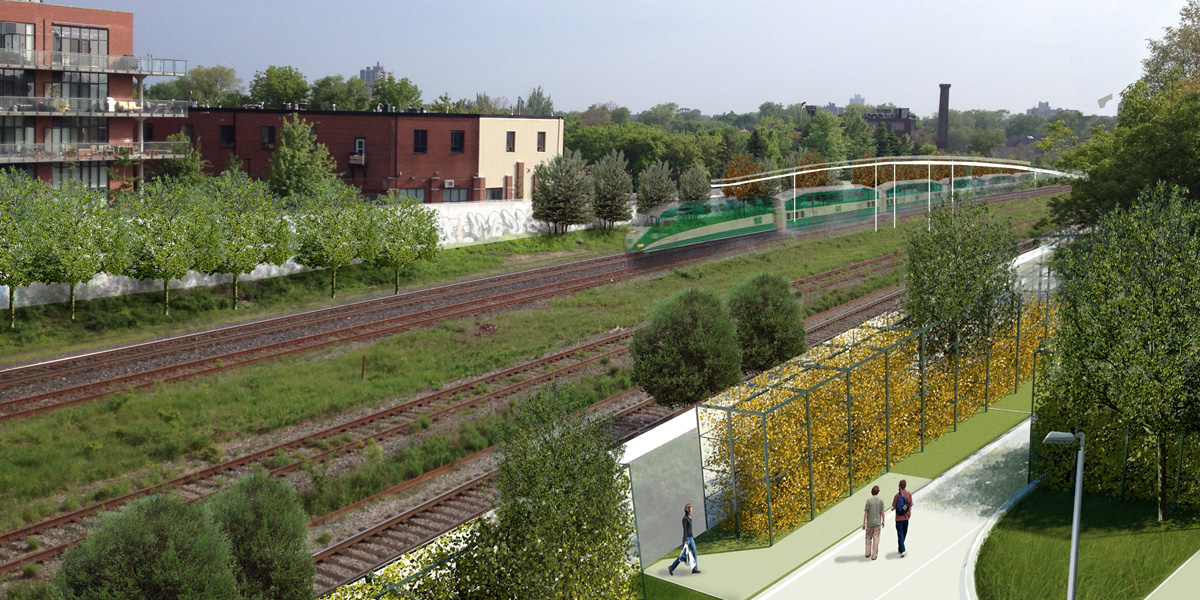Georgetown South Corridor Expansion – Noise Barrier Alternatives Community Study

Metrolinx is expanding its commuter rail corridor through West Toronto in order to provide capacity for the Union-Pearson Express air-rail link and expanded GO Transit service to Georgetown, Guelph and Kitchener. The corridor passes through mature neighbourhoods and present-day brownfield redevelopment sites, and as might be expected the planned expansion of daily train trips on the line entails substantial disruption in these neighbourhoods.
Brown + Storey Architects Inc. were commissioned by local community groups to study shortcomings in Metrolinx’s plans for noise mitigation and corridor security. Official planning has focused on the proposed construction of conventional, 5 m tall concrete or vinyl barrier walls along significant stretches of the corridor, a move that the community anticipates will have severe consequences for local quality of life and neighbourhood aesthetics.
B+SAi’s alternatives demonstrate that noise mitigation could be coupled with aesthetic and ecological improvements, and leveraged to create both local public spaces and a multi-modal pedestrian and cycling route along the entire corridor. Such a trail system could be expected to spur redevelopment and improved urban outcomes along the whole corridor, as has already occurred along the presently limited length of the City of Toronto’s West Toronto Railpath (designed by Brown + Storey Architects Inc. and Scott Torrance Landscape Architect, and opened in 2009).
The community continues to use these proposals to press Metrolinx for better solutions to noise mitigation and to leverage the corridor for the benefit of all residents who live along it.
Press
Metrolinx’s Berlin Wall
NOW Toronto
Metrolinx’s ‘huge’ sound walls draw citizen protest — and ideas for a greener alternative
The Toronto Star
Metrolinx project sparks calls for new vision at the rail’s edge
DandyHorse Magazine









